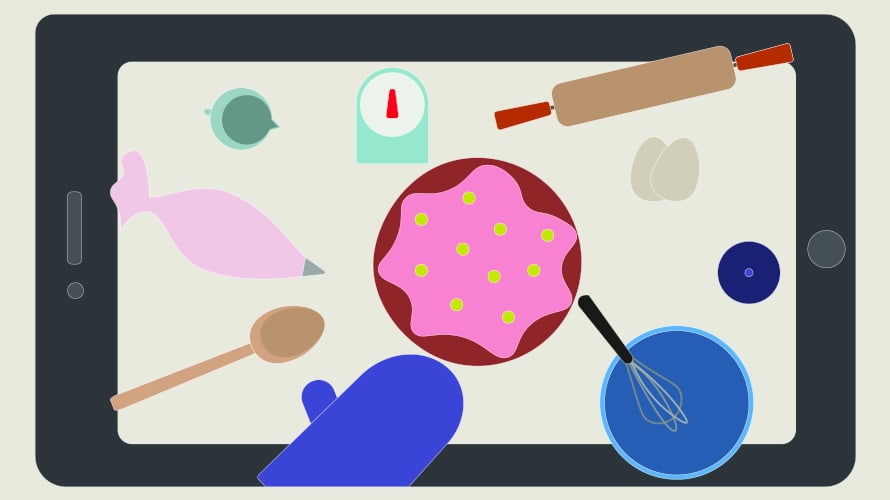Bake in plenty of “me” into the millennial marketing mix.
Credit: Image by Getty Images – Originally featured in Ad Week
In young people’s eyes, advertising was already on life-support before the pandemic.
Young people already saw advertising in a coma. For millennials, there shouldn’t be any “mass” in marketing, but plenty of “me”: my ideas, my values, my life. It’s time for marketers to step down from the pedestal and help young people live better lives.
From living bigger to living better
These couple of months where stores and restaurants have been closed and people have been confined to their homes is an opportunity to reflect and ask how marketing mixes should look from product to promotion if we had to start over. And most importantly, it should ask how a brand should behave.
Young people are looking for happiness in other places than their wallet or shopping baskets. They don’t buy what a brand produces but instead focus on what that specific product or service can make them experience, do or become. The social media updates in this period are a testament to the change. “Watch me make this vegan pecan pie with no corn syrup.” “See me, I’m playing the piano.” “Check out this 5K run I just did.”
Use people’s urge for something like baking as a recipe for your marketing post-pandemic. For too long, our industry has been stuck in a mass marketing mindset. It’s time to open up your brand for people’s creativity, dreams and ambitions.
For too long, our industry has been stuck in a mass marketing mindset. It’s time to open up your brand for people’s creativity, dreams and ambitions.
The $1.3 trillion question
When you’re calling the shots or chasing that dream, you’re truly motivated to act. To young people, identity can be bought off the shelves like a cheap cap with a label, whereas a personality must be earned through experiences or personal accomplishment. In 2018, U.S. millennials already accounted for an estimated $1.3 trillion in direct annual spending. And people are hungry for experiences. According to Harris, consumer spending on experiences and events has increased by 70% since 1987. That’s a force that cannot be ignored.
Millennials are not walking piggy banks; they have dreams and aspirations
Some brands, like sports retailer RYU, get this. They were founded in 2011 on the simple idea of helping people reach their goals. The brand is taking a backseat and cheering for its customers’ success. One of its promotions rewards its customers who lose weight by exchanging their athleticwear if it doesn’t fit anymore.
Maybe the reason why people tend to hate advertising is that we don’t treat them as individuals with dreams and passions, but simply as walking piggy banks. After the financial crisis, I witnessed how brands were jeopardized this for short-term sales wins. Let’s not repeat the mistakes of the past.
Outdoor retailer REI’s famed “#OptOutside” campaign urging people to enjoy the outdoors rather than go shopping on Black Friday has continuously grown in reach from 1.4 million people to 15 million people over a four-year period. REI found a meaningful role to play, and people loved it.
How can you open up for people’s passions across your products? Remember, young people are savvy marketers themselves, selling their skills (Task Rabbit), renting out their places (Airbnb) or marketing themselves (Bumble). They are used to getting what they want with no more than a swipe of their finger. In their lifetime, their only experience with big brands has been one of standardized goods produced, often with high social and/or environmental costs.
LEGO has found a meaningful mission to play: “Inspire the builders of tomorrow.” With the LEGO Ideas platform, they let passionate builders upload their ideas for LEGO sets. If that idea gains more than 10,000 votes, it’s turned into a product. That’s how you bring people along for the ride. Or take District Vision. The brand sells eyewear to runners but sees its offerings as part of a much bigger issue helping runners couple performance and mindfulness. Among other initiatives, District Vision offers mindful running classes. Putting people in charge pays back. District Vision grew more than 300% between 2016-17 and is present in more than 100 retailers. District Vision found a position that sets them apart from other players in the running eyewear market and can price their products at a premium.
Don’t sell the cake, help people bake it
During a challenging time, you can either panic and pull out the war-like marketing machine to battle for survival or you can take a deep breath and aim to prosper. Don’t be a screaming salesperson; help people live better, more meaningful lives.

